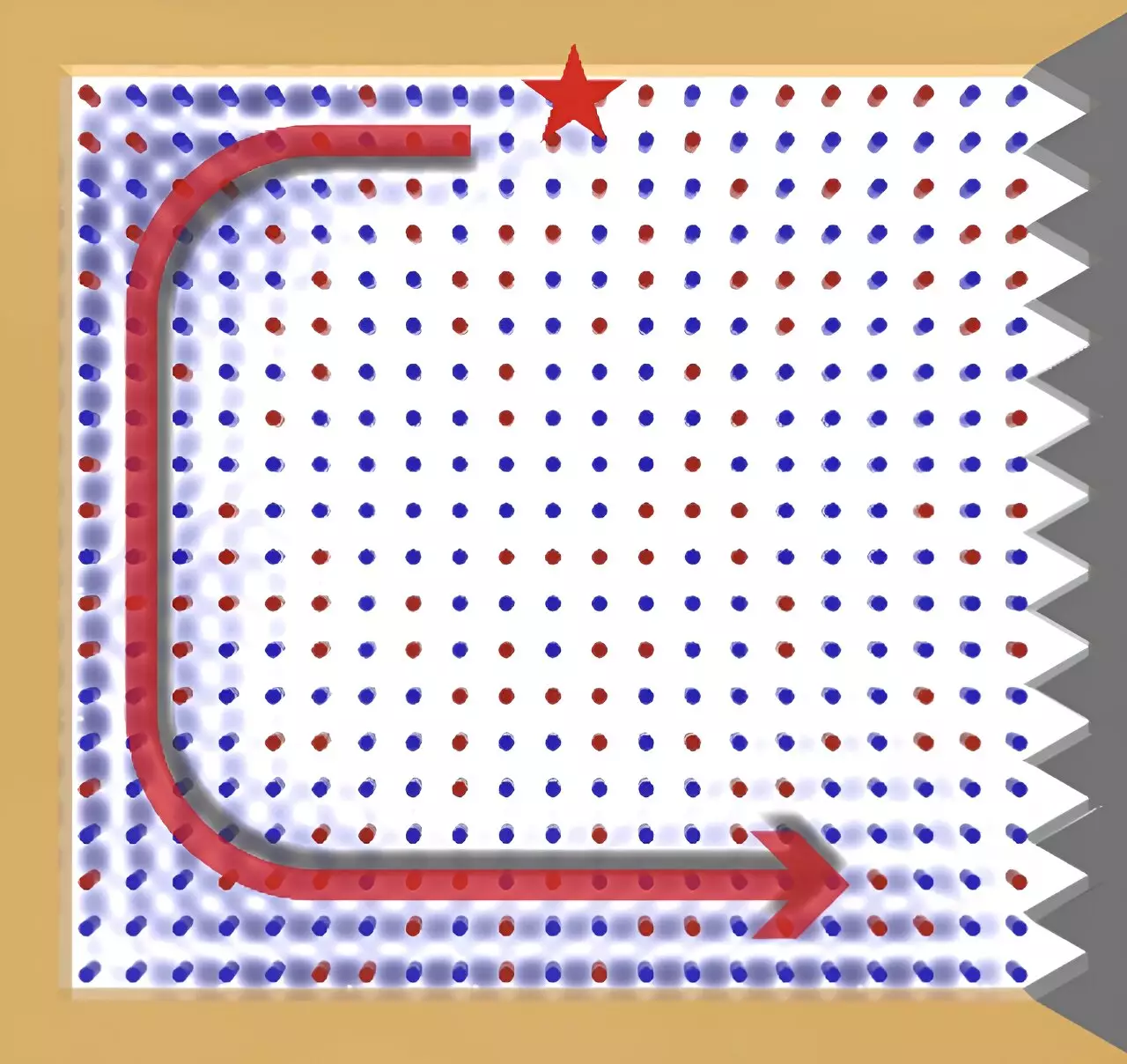Photonic alloys, materials that combine two or more photonic crystals, show great promise in controlling the propagation of electromagnetic waves. However, one major limitation of these materials is light backscattering, which reflects light back in the direction it originated, hindering data and energy transmission. Overcoming this challenge is crucial for unlocking the full potential of photonic alloys as efficient waveguides.
Researchers at Shanxi University and the Hong Kong University of Science and Technology have made significant strides in the development of photonic alloys with topological properties. By combining nonmagnetized and magnetized rods in a nonperiodic 2D photonic crystal configuration, they have created photonic alloys that support chiral edge states in the microwave regime. This breakthrough could lead to the creation of new topological photonic crystals.
The researchers used a mix of yttrium iron garnet (YIG) rods and magnetized YIG rods to create their photonic alloy. Through experimental setups involving a vector network analyzer, source and probe antennas, and circular holes in a metal plate, they were able to study the intensity and phase of electromagnetic waves within the material. By using a metal cladding with a Chern number of zero alongside a photonic topological insulator with a Chern number of 1, a topological edge state emerged at the boundary, following the principle of bulk-edge correspondence.
To prevent interference with the accurate characterization of nonreciprocal phenomena, the researchers utilized a microwave absorber to suppress the transmission of boundary states. This approach allowed them to avoid the formation of closed loops within the boundary state. Furthermore, they were able to demonstrate that topological properties could be exhibited with a low doping concentration of magnetized rods, without requiring order. This finding suggests that chiral edge states can be generated without breaking time reversal symmetry throughout the crystal, opening up new possibilities for experimental realization.
The researchers plan to explore multicomponent topological photonic alloy systems in their future studies. By expanding the number of degrees of freedom, they aim to manipulate various parameters and observe a wider range of effects. Additionally, they intend to investigate similar phenomena in optical frequencies, exploring the potential applications of their findings in photonics. The ultimate goal is to extend their recent discoveries into the optical domain, paving the way for innovative developments in manipulating light and creating advanced photonic devices.
The evolution of photonic alloys with topological properties represents a significant advancement in the field of waveguides and photonics. By overcoming the challenge of light backscattering and exploring new experimental avenues, researchers are pushing the boundaries of what is possible with these materials. The future looks bright for photonic alloys, as they hold the potential to revolutionize how we control and manipulate electromagnetic waves for various applications in communication, energy, and beyond.


Leave a Reply